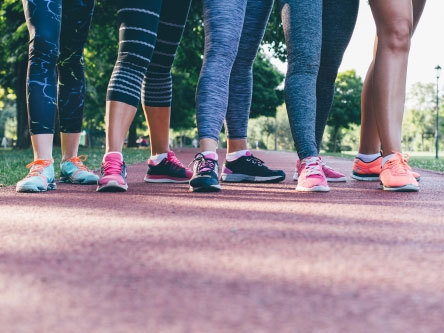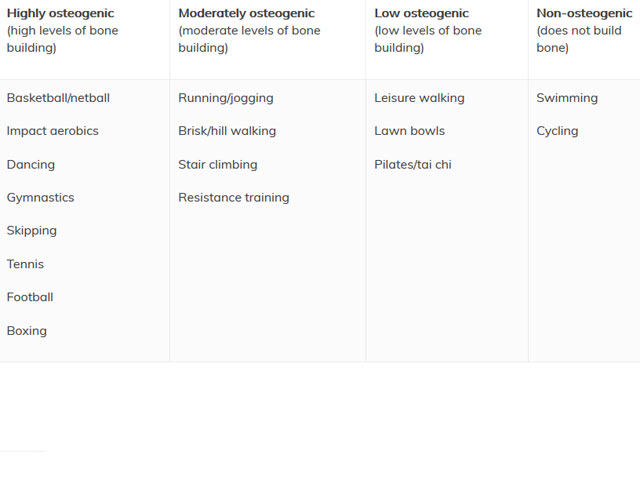How To Bring Your A-Game To Your Frame

How To Bring Your A-Game To Your Frame
We tend to think of our skeletons as a never-changing frame. However, just like other parts of our bodies, our bones are constantly being broken down and renewed.
Bones, just like muscles, are living tissue and need to be looked after. And an important part of bone care is physical activity, to enable them to gain strength and remain strong throughout life.
But what exercise or physical activity is best for bone health? You may have heard of the term 'weight-bearing exercise', but what does the term actually mean? And how do you get the most bang for your 'exercise buck' when it comes to bone health? Here, we'll answer these questions and more.
The Cycle Of Your Skeleton
Before we delve into the 'how-to', it's important to be aware that your bone health can be dramatically affected by your age and life stage.
During childhood and adolescence, more bone is made than is broken down, so the skeleton increases in both size and density. By about 25 to 30 years of age, peak bone mass is achieved, which means that bones have reached their maximum strength and density.
In the first few years after menopause, due to declining levels of the hormone oestrogen, most women go through rapid bone loss, whereby bone tissue breaks down at a higher rate than it is replaced. The rate of loss usually slows but continues throughout the postmenopausal years.
It is this bone loss in menopausal or postmenopausal women that commonly leads to osteoporosis. Osteoporosis – meaning, literally, bones with holes – is a condition characterised by brittle bones that are prone to fracture.
Bone health goals by life stage:
For girls and adolescent women, it's all about building maximum bone strength and a solid for foundation for future skeletal health.
For young women until they reach midlife, the goal is to optimise and maintain muscle and bone strength.
For older women, the goal is to reduce bone loss as well as to maintain muscle mass and strength, and to minimise the risk of falls and preserve balance.
Movement for bone health
How you move – and how much time you spend doing it – has big implications for your bone health. The best exercise and physical activity for building and maintaining strong bones is what is called 'weight-bearing exercise'.
Essentially, weight-bearing exercise is exercise that is done on your feet so you bear your own weight. For example, brisk walking, jogging, dancing, tennis and basketball are all weight-bearing exercises, and help to stimulate new bone growth and bone renewal.
Not all forms of weight-bearing exercise are created equal. The ability of an exercise to build and replace bone – known as its osteogenic capacity – depends on the amount of impact and physical stress that is applied to the bone during the activity.
This table, adapted from Osteoporosis Australia, shows which weight-bearing activities help to build bone more effectively than others.

It is important to note that certain exercises such as swimming and cycling still have many benefits for your general health, such as improving muscle mass and reducing your risk of heart disease. However, given that they are not weight-bearing, they will not help to build and replace bone.
Get the most bang for your exercise buck
When it comes to exercising for optimum bone health, Osteoporosis Australia recommends keeping these tips in mind:
Exercise or physical activity must be regular – at least three times per week
The difficulty of exercise or physical activity should increase or vary over time. This helps to challenge the bones and muscles and increase their bone-building ability (for example, increase the distance, duration, intensity, weights used)
Your physical activity or exercise routines should be varied, rather than repetitive, to help challenge the bones and muscles
Exercise should be performed in short, intensive bursts.
Read more about bone health, including the importance of vitamin D and calcium, and get the whole health picture for improving your health now and into the future.
Published with the permission of Jean Hailes for Women's Health jeanhailes.org.au 1800 JEAN HAILES (532 642)
MORE



